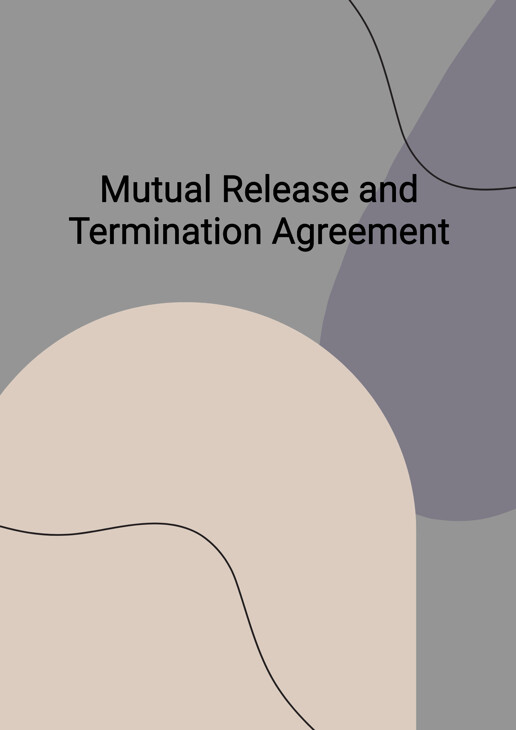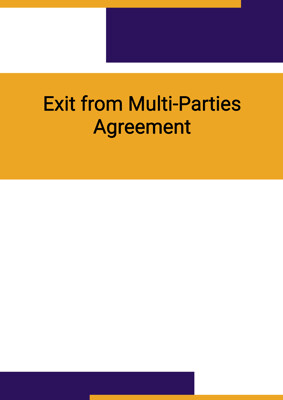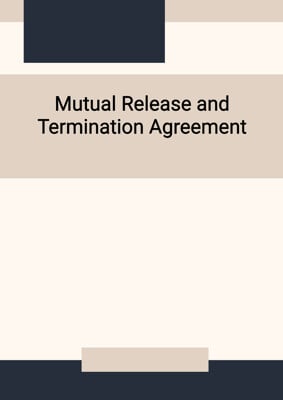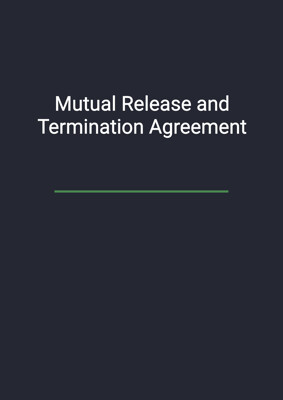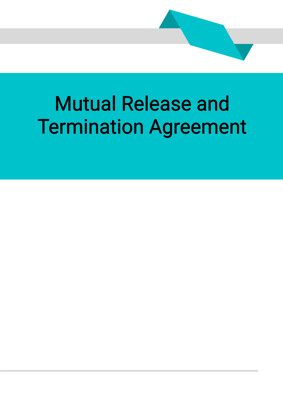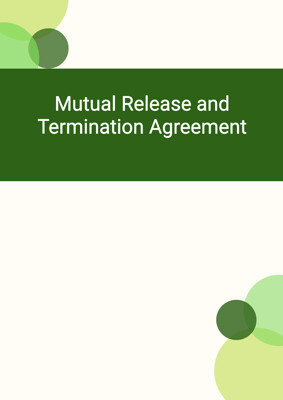How to Tailor the Document for Your Need?
01
Create Document
Fill in the details of the parties. You can click the "Fill with Member’s Information" button to complete it with information saved to your account.
02
Fill Information
Please fill in any additional information by following the step-by-step guide on the left hand side of the preview document and click the "Next" button.
03
Get Document
When you are done, click the "Get Document" button and you can download the document in Word or PDF format.
04
Review Document
Please get all parties to review the document carefully and make any final modifications to ensure that the details are correct before signing the document.
Document Preview
Document Description
The 'Mutual Release and Termination Agreement' is a document that serves to terminate an existing agreement between multiple parties. This agreement is entered into on the current date between Party 1, Party 2, and Party 3. The document begins by stating the principal place of business for each party and establishes them as the 'parties' involved in the agreement. It is important to note that this termination agreement is being made in consideration of the mutual undertakings contained within it.
The first section of the agreement, titled 'Termination,' outlines the actions being taken by the parties. It states that the agreement and any amendments to it are being terminated. Additionally, the parties release and discharge each other from all obligations under the agreement, including any claims and demands related to them. This section also addresses the parties' accrued liabilities and obligations as of the termination date.
The second section, titled 'Effect of Termination,' clarifies that as of the termination date, none of the parties or their affiliates will have any liability or obligation to each other under the agreement. This section emphasizes the finality of the termination and the absence of ongoing obligations.
The third section, titled 'Further Assurance,' highlights the parties' agreement to perform any necessary acts, execute documents, or take any other actions required by law to implement and give effect to the termination agreement.
The fourth section, titled 'Counterparts,' explains that the termination agreement can be executed in multiple counterparts, with each counterpart being considered an original. This provision allows for flexibility in signing and ensures that all counterparts together constitute one valid instrument.
The fifth section, titled 'No Third Parties Rights Under Agreements,' clarifies that individuals who are not parties to the termination agreement or the original agreement do not have the right to enforce any of its terms. This provision protects the parties from potential claims or disputes from third parties.
The final section, titled 'Governing Law,' states that the termination agreement and the relationship between the parties will be governed by and interpreted in accordance with the jurisdiction state law. This provision establishes the legal framework for any disputes or legal matters arising from the termination agreement.
In summary, the 'Mutual Release and Termination Agreement' is a legally binding document that terminates an existing agreement between multiple parties. It releases the parties from their obligations under the agreement and ensures that they have no further liability or obligation to each other. The agreement also includes provisions for further actions, counterparts, third-party rights, and governing law.
How to use this document?
To use the 'Mutual Release and Termination Agreement,' follow these steps:
1. Review the agreement: Familiarize yourself with the document and understand its purpose. Ensure that all parties involved are aware of the termination and agree to proceed.
2. Identify the parties: Clearly identify each party by their name and principal place of business. This ensures that all parties are correctly identified and included in the termination agreement.
3. Terminate the agreement: State the termination date and specify that the agreement and any amendments to it are being terminated. This step officially ends the existing agreement.
4. Release and discharge: Include language that releases and discharges each party from all obligations under the agreement. This ensures that both parties are relieved of any claims or demands related to the terminated agreement.
5. Address accrued liabilities: Specify that each party's accrued liabilities and obligations as of the termination date are also being released and discharged. This step ensures that all existing claims and demands are addressed.
6. Confirm no further rights: Clearly state that none of the parties or their affiliates will have any liability or obligation to each other under the terminated agreement. This step emphasizes the finality of the termination.
7. Perform further acts: Agree to perform any further acts, execute necessary documents, or take any other actions required by law to implement and give effect to the termination agreement. This step ensures that all necessary actions are taken to fully terminate the agreement.
8. Execute counterparts: Sign the termination agreement in any number of counterparts. Each counterpart should be considered an original, and all counterparts together constitute one valid instrument. This step allows for flexibility in signing and ensures the validity of the agreement.
9. Clarify third-party rights: Include a provision stating that individuals who are not parties to the termination agreement or the original agreement do not have the right to enforce any of its terms. This step protects the parties from potential claims or disputes from third parties.
10. Determine governing law: Specify the jurisdiction state law that will govern the termination agreement and the relationship between the parties. This step establishes the legal framework for any disputes or legal matters arising from the termination agreement.
By following these steps, you can effectively use the 'Mutual Release and Termination Agreement' to terminate an existing agreement between multiple parties. Remember to consult legal professionals if needed and ensure that all parties involved fully understand and agree to the terms of the termination agreement.
Not the right document?
Don’t worry, we have thousands of documents for you to choose from:
